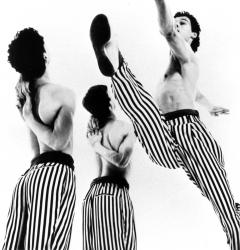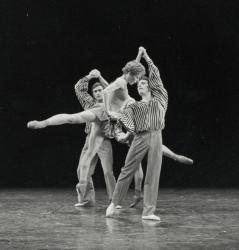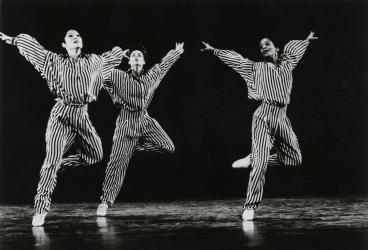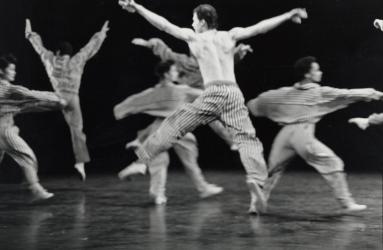Dance III
By Philip Glass
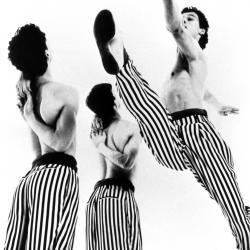
The Norman and Rosita Winston Foundation
I. Washington, Stasick and Carrafa, O'Day and Bishton
II. Washington, Stasick, Foldi, Oppenheimer and Colton, Whitener, Foster, Nakagawa, Troy, Santee
III. Washington, O'Day, Foldi, Carrafa, Stasick, Bishton
IV. Colton, Whitener, Foster, Nakagawa, Troy, Santee
V. Washington, Stasick, Foldi and Carrafa. O'Day, Bishton
VI. Stasick, Whitener and Washington, Colton
VII. Carrafa, O'Day, Bishton
VIII. Oppenheimer, Colton, Whitener, Foster, Nakagawa, Troy, Santee
IX. Full Company
Erzsebet Foldi, Stephanie Foster, Julie Nakagawa, Cathy Oppenheimer, Karen Stasick, Ellen Troy, Shelley Washington
Jamie Bishton, John Carrafa, Richard Colton, Kevin O'Day, Kevin Santee, William Whitener
Music Produced by Kurt Munkacsi
Music conducted by Michael Riesman
From the original program: "This work was made possible, in part, with public funds from the New York State Council on the Arts and the National Endowment for the Arts. Also, special thanks for the generous support of the Doll Foundation, the Andrew W. Mellon Foundation, the Mobil Foundation, Inc., The Ida and William Rosenthal Foundation, and Agnes Gund Saalfield."
Originally premiered as Untitled, the title In The Upper Room first came into print on February 3, 1987.
Olivier Award
Won:
Outstanding Achievement in Dance: Twyla Tharp and Jennifer Tipton (1991)
Following a grueling year of touring, Tharp's company took a year long haitus, reassembling in May 1986. The first new piece they performed was In The Upper Room.
Tharp commissioned composer Philip Glass to create a new score. "The music hints at things, but I tried to leave a lot of space for the dance to happen,” states Glass, “In that way the dancers complete it, fill it in." The choreography fuses a broad spectrum of movement into one vigorous vocabulary; boxing, tap dance, yoga, ballet and full-out sprinting are intertwined. The dancers must push through the difficult steps, intricate timing and aerobic demands of the choreography.
The dancers appear and disappear through fog and lights designed by Jennifer Tipton. The costumes by Norma Kamali begin as black and white striped jumpsuits. As the piece progresses, the dancers shed layers of clothing, revealing bright red under-layers and sweaty skin.
In The Upper Room synthesizes choreography, costumes, music and lighting into a transcendent experience for both audience and performers. It has become a central piece in the repertories of dance companies worldwide.
Company dancers in the first studio run-through.
In the Upper Room
Composed by Philip Glass - 1986
Conducted by Michael Riesman
Released on Orange Mountain Music
1. Dance I
2. Dance II
3. Dance III
4. Dance IV
5. Dance V
6. Dance VI
7. Dance VII
8. Dance VIII
9. Dance IX
Dance III
By Philip Glass

